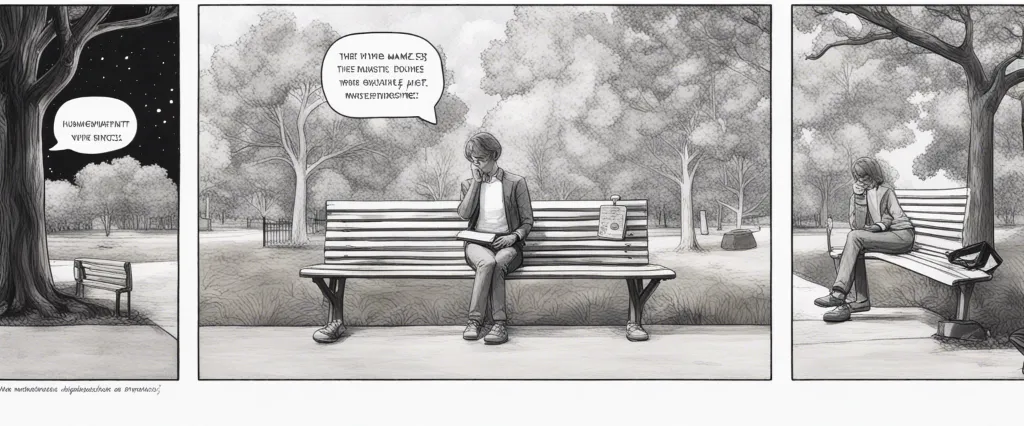In her insightful book, “How to Break Up with Your Phone,” Catherine Price delves into the crucial issue of our increasing dependence on technology, particularly our smartphones. With her expertise as a science journalist and the author of several health-related books, Price offers readers an eye-opening exploration of the detrimental effects of excessive phone usage and provides practical strategies for regaining control over our digital lives. Through a combination of personal anecdotes, scientific research, and step-by-step guidance, she presents an essential handbook for reclaiming a healthier and more mindful relationship with our devices. As society grapples with the pervasive influence of technology, Catherine Price emerges as a progressive voice, urging readers to break free from the grip of their phones and regain control over their lives.
Chapter 1: The Phone Problem – Recognizing the Impact of Excessive Phone Use
Chapter 1 of “How to Break Up with Your Phone” by Catherine Price, titled “The Phone Problem – Recognizing the Impact of Excessive Phone Use,” examines the pervasive issue of excessive phone usage and its consequences on our well-being and overall quality of life.
Price begins by highlighting our increasing dependency on phones, which has led to a constant need for connectivity and consequent addiction to our devices. She cites alarming statistics and research studies that reveal the detrimental effects of excessive phone use, such as decreased productivity, impaired cognitive abilities, sleep disturbances, and compromised relationships.
The chapter then delves into the psychological aspects of phone addiction, discussing the concept of behavioral priming and how phones trigger our evolutionary reactions to seek out information and connection. This constant stimulation from our phones creates a cycle of distraction and decreases our ability to focus on tasks and prioritize our time effectively.
Moreover, Price emphasizes how phone usage affects our emotional well-being. She explains how the constant exposure to social media, comparing ourselves to others, and living through virtual experiences can lead to feelings of inadequacy, anxiety, and depression.
To help readers understand the extent of their phone addiction, Price includes a quiz called “The Smartphone Compulsion Test.” This questionnaire allows individuals to gauge their phone use habits and recognize whether they may have an unhealthy relationship with their device.
Overall, Chapter 1 serves as a wake-up call to acknowledge the impact excessive phone use has on our lives. It sets the stage for readers to explore ways to break free from their phone addiction and regain control over their attention, time, and overall well-being.
Chapter 2: The Science of Phone Addiction – Understanding the Psychological and Physiological Effects
Chapter 2 of “How to Break Up with Your Phone” by Catherine Price delves into the scientific aspects of phone addiction, shedding light on the psychological and physiological effects it has on individuals. The chapter emphasizes the need to understand these effects in order to break free from the grip of phone addiction.
Price begins by explaining that phone addiction is not a mere coincidence or individual weakness but an intentional design by technology companies to capture our attention. The addictive nature of smartphones is rooted in the release of dopamine, a neurotransmitter that plays a significant role in reward-motivated behavior. The constant notifications, messages, and likes trigger a dopamine response, creating a cycle of addiction.
The chapter further explores the psychological impacts of phone addiction, revealing that excessive phone usage leads to reduced cognitive ability, impaired focus, and increased anxiety and stress levels. Price highlights the concept of “deep work” – the ability to focus without distractions – as something that is greatly hindered by phone addiction.
Additionally, the author examines the physiological effects of phone addiction on our sleep patterns. The blue light emitted by screens disrupts the production of melatonin, a hormone responsible for regulating sleep. Consequently, excessive phone usage before bed leads to poor sleep quality, resulting in increased fatigue and decreased productivity during the day.
Understanding the psychological and physiological impacts of phone addiction is crucial because it helps individuals recognize the negative consequences it has on their lives. Recognizing these effects empowers individuals to take necessary steps to disconnect from their phones and establish healthier boundaries, ultimately regaining control of their time, attention, and overall well-being.
In summary, Chapter 2 of “How to Break Up with Your Phone” provides insights into the science behind phone addiction, highlighting its psychological and physiological effects. By understanding these effects, individuals can begin to break the cycle of addiction and cultivate healthier relationships with their phones.
Chapter 3: Assessing Your Relationship with Your Phone – Evaluating Your Phone Usage Habits
Chapter 3 of “How to Break Up with Your Phone” by Catherine Price is titled “Assessing Your Relationship with Your Phone – Evaluating Your Phone Usage Habits”. This chapter focuses on helping readers develop a deeper understanding of their personal phone usage habits and the impact they have on their daily lives.
Price begins the chapter by introducing the Phone Usage Audit, a tool designed to help individuals assess their current relationship with their phones. This audit encourages readers to track their phone usage habits over the course of a week, noting the specific activities they engage in and the amount of time spent on each. By completing this audit, readers gain insight into how much time they truly spend on their phones and where that time is being allocated.
The chapter also explores various signs and symptoms of unhealthy phone usage, such as feeling anxious or restless without a phone, constantly checking for notifications, or using the phone as a means of avoiding boredom or discomfort. Price emphasizes the need for individuals to honestly evaluate their own behaviors and consider how these habits may be impacting their overall well-being.
Throughout the chapter, the author provides readers with research and real-life anecdotes to highlight the negative consequences of excessive phone usage. She highlights the decrease in productivity, impacts on relationships and social interactions, and negative effects on mental health.
By the end of the chapter, readers are encouraged to reflect on the findings from their Phone Usage Audit and consider the positive changes they can make to regain control over their phone usage. Price sets the stage for developing a healthier relationship with our devices by acknowledging the need for mindset shifts and sustainable behavioral changes.
Chapter 4: Setting Boundaries – Establishing Healthy Phone Use Guidelines

Chapter 4 of “How to Break Up with Your Phone” by Catherine Price is titled “Setting Boundaries – Establishing Healthy Phone Use Guidelines.” In this chapter, Price emphasizes the importance of creating clear and conscious guidelines for phone usage to regain control over our relationship with our devices.
Price begins by discussing the necessity of defining boundaries, as our phones have infiltrated nearly every aspect of our lives. She suggests starting by setting boundaries around time and space, emphasizing the need to allocate phone-free zones and times throughout the day. This could include designating certain areas or times where phone use is strictly prohibited, such as during meals or before bed.
The author further encourages readers to determine their priorities and establish guidelines accordingly. By identifying what truly matters to us—whether it’s work, relationships, or personal hobbies—we can create phone usage rules that align with those priorities. For instance, if family time is important, establishing rules that limit phone usage during specific hours can help ensure quality connections.
Price also addresses challenges that may arise when setting boundaries, such as the fear of missing out (FOMO) or social pressure. She suggests ways to confront these challenges, such as developing alternative activities to replace excessive phone usage and learning to embrace the benefits of mindful phone use.
Finally, the chapter concludes with practical steps for implementing healthy phone use guidelines, including writing down specific rules, sharing them with friends and family for accountability, and periodically reviewing and revising the guidelines as needed.
In summary, Chapter 4 provides readers with guidance on creating boundaries for healthy phone use, emphasizing the importance of time, space, priorities, and overcoming challenges. By establishing clear guidelines and actively managing their phone usage, readers can regain control over their relationship with their devices and foster healthier habits.
Chapter 5: Mindful Engagement – Practicing Present-Moment Awareness and Intentional Phone Use
Chapter 5 of “How to Break Up with Your Phone” by Catherine Price is titled “Mindful Engagement – Practicing Present-Moment Awareness and Intentional Phone Use.” In this chapter, Price discusses the importance of being mindful and present in our phone usage to foster healthier relationships with our devices.
Price starts by highlighting the detrimental effects of constant phone use on our attention spans and cognitive abilities. She emphasizes the need for us to take control and be more intentional in our phone usage. The chapter introduces the concept of mindfulness and its application to phone use. Mindfulness involves paying attention to the present moment without judgment.
The author provides practical tips and exercises to cultivate mindfulness in relation to our phones. First, she suggests creating a phone zone, a designated area where phone use is allowed. By establishing boundaries, we can limit mindless scrolling and focus on more meaningful activities. Price recommends mindful practices such as setting intentions before picking up the phone, taking deep breaths, and giving ourselves permission to choose intentionally how we spend our time.
Furthermore, Price discusses the importance of being aware of our digital environment and taking proactive steps to declutter it. She advises organizing apps, eliminating notifications, and curating a mindful digital space. By reducing distractions and creating a more intentional phone environment, we can better direct our attention and engage in activities that align with our values and goals.
To reinforce mindful engagement, Price encourages incorporating mindful pauses throughout the day, where one deliberately disconnects from the phone and engages with the present moment. She emphasizes the benefits of embracing boredom, as it fosters creativity and deeper self-reflection.
In conclusion, Chapter 5 emphasizes the significance of being present and intentional in our phone use. By cultivating mindfulness, setting boundaries, and decluttering our digital environment, we can regain control over our attention and build healthier relationships with our devices.
Chapter 6: Digital Detox – Taking Breaks and Disconnecting from Your Phone
Chapter 6 of “How to Break Up with Your Phone” by Catherine Price delves into the importance of taking breaks and disconnecting from our phones in order to have a healthier relationship with technology.
The chapter begins by highlighting the addictive nature of smartphones and how they have become a constant presence in our lives, often leading to feelings of anxiety and dependency. Price emphasizes the need for regular digital detoxes to regain control and establish boundaries with our devices.
The author introduces three types of breaks: the Mini Break, the Daylong Break, and the Full-Fledged Break. Mini Breaks involve short periods of phone disconnection, such as leaving the phone at home during a short errand or turning it off while spending time with loved ones. Daylong Breaks are aimed at disconnecting from technology for an entire day, while Full-Fledged Breaks involve extended periods (ideally a week or more) with no smartphone use.
Price presents practical tips for successfully implementing these breaks, such as setting clear goals and establishing alternative activities to replace phone usage. She also emphasizes the importance of mental preparation and managing withdrawal symptoms that may arise during the detox process.
In addition, the chapter explores the benefits of taking breaks from the digital world. Disconnecting from our phones allows us to be more present in the moment, deepen relationships, increase productivity, boost creativity, and improve overall mental well-being.
Ultimately, Chapter 6 of “How to Break Up with Your Phone” highlights the significance of periodically disconnecting from our devices. By incorporating regular breaks into our lives, we can regain control over our relationship with technology and cultivate a healthier, more balanced lifestyle.
Chapter 7: Reconnecting with the Real World – Rediscovering Offline Activities and Relationships
Chapter 7: Reconnecting with the Real World – Rediscovering Offline Activities and Relationships
In Chapter 7 of her book “How to Break Up with Your Phone,” Catherine Price explores the importance of reconnecting with the offline world and rediscovering meaningful activities and relationships. She emphasizes that excessive phone usage often leads to a disconnection from real-life experiences and relationships, causing potential harm to our mental health and overall well-being.
Price suggests various strategies to help readers establish a healthier relationship with their phones. One crucial step is to develop a well-rounded life where phone usage does not dominate all aspects. She encourages engaging in offline activities such as hobbies, exercise, and reading physical books, allowing individuals to regain a sense of fulfillment and intellectual stimulation that phones often replace.
Moreover, Price addresses the significance of nurturing offline relationships. She reminds readers that meaningful relationships can only develop when people invest time and effort in face-to-face interactions. By limiting phone usage in social situations, reconnecting with loved ones becomes more engaging, fostering deeper connections and a greater sense of belonging.
The chapter also emphasizes the importance of creating boundaries and establishing phone-free zones. Price recommends designating specific times or places where phone use is restricted to ensure a clear separation between the digital and physical worlds.
Price concludes the chapter by explaining that breaking up with one’s phone is not about completely eliminating its use but rather cultivating a healthy balance. By recognizing the negative effects of excessive phone usage and implementing practical strategies, individuals can reclaim their time, focus, and genuine connections to the real world.

Chapter 8: Sustaining a Healthy Relationship with Your Phone – Maintaining Balance and Long-Term Change
Chapter 8 of “How to Break Up with Your Phone” by Catherine Price focuses on the importance of maintaining a healthy relationship with your phone by striving for balance and implementing long-term changes. Price highlights that breaking up with your phone is not a one-time event but an ongoing process to establish healthier habits and sustain them.
The chapter begins by discussing the negative impact excessive phone use can have on our relationships, self-esteem, and overall wellbeing. Price emphasizes that change requires awareness and effort, and provides practical tips to help readers achieve a healthier phone-life balance.
To sustain long-term change, she recommends setting up digital guardrails, such as creating personal rules for phone usage and implementing various strategies like having phone-free zones or scheduled phone breaks. Price also encourages readers to actively engage in activities they find meaningful, as this can help reduce reliance on the phone for entertainment and validation.
She also emphasizes the significance of practicing mindfulness and being present in the moment, both of which can limit mindless scrolling and help develop a healthier mindset towards technology. The chapter provides specific prompts and techniques for practicing mindfulness in relation to phone use.
Furthermore, Price stresses the importance of finding support systems and accountability, whether through friends, family, or digital detox challenges. She suggests forming or joining a “phono-sanity group” to encourage and motivate each other in the pursuit of a healthier relationship with phones.
In summary, Chapter 8 of “How to Break Up with Your Phone” addresses the need for sustaining a healthy relationship with our smartphones by maintaining balance and implementing long-term changes. It offers practical advice, strategies, and prompts for setting digital boundaries, cultivating mindfulness, and seeking support to ensure a healthier and more intentional use of technology.
After Reading
In conclusion, “How to Break Up with Your Phone” by Catherine Price is a thought-provoking and practical guide that exposes the detrimental effects of excessive smartphone use on our mental and physical well-being. Price provides valuable insights into the addictive nature of technology and the negative impacts it has on our attention span, productivity, sleep patterns, and overall happiness. Through a 30-day plan, she offers practical tips and strategies to regain control over our smartphone habits, establish healthier boundaries, and cultivate a more intentional and fulfilling life offline. This book serves as an eye-opening wake-up call to the pervasive influence of technology in our lives and empowers readers with the tools to develop a healthier relationship with their phones.
1. Digital Minimalism: Choosing a Focused Life in a Noisy World” by Cal Newport – In this book, Newport offers a practical guide for finding balance and cultivating a healthy relationship with technology. Drawing on psychological research and real-life experiences, he explores strategies to declutter digital distractions and regain control of our attention.
2. “The Joy of Missing Out: Finding Balance in a Wired World” by Christina Crook – Crook shares her own journey of disconnecting from the digital world and embracing a simpler, more fulfilling life. Through personal anecdotes and practical tips, she encourages readers to redefine their relationship with technology and find joy in the present moment.
3. Irresistible: The Rise of Addictive Technology and the Business of Keeping Us Hooked” by Adam Alter – This eye-opening book delves into the addictive nature of technology and how it has been purposely designed to hijack our attention. Alter explores the psychological and behavioral implications of our device dependency, while providing strategies for achieving a healthier balance.
4. “Reclaiming Conversation: The Power of Talk in a Digital Age” by Sherry Turkle – Turkle examines the effects of constant connectivity on our ability to have meaningful conversations and develop authentic relationships. Through research and personal stories, she highlights the importance of face-to-face communication in an increasingly digital world.
5. The Shallows: What the Internet Is Doing to Our Brains” by Nicholas Carr – Carr presents a thought-provoking analysis of how the internet is shaping our brains, attention spans, and ability to concentrate. He explores the impact of constant online distractions on our cognitive abilities, urging readers to reflect on the long-term consequences of excessive screen time.
These books, like “How to Break Up with Your Phone,” provide valuable insights and practical strategies for dealing with the challenges of our hyperconnected world, empowering readers to take control of their digital habits and reclaim their lives.




